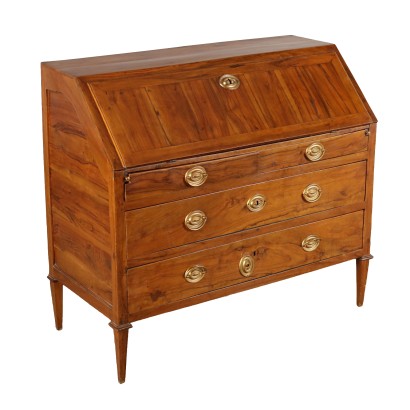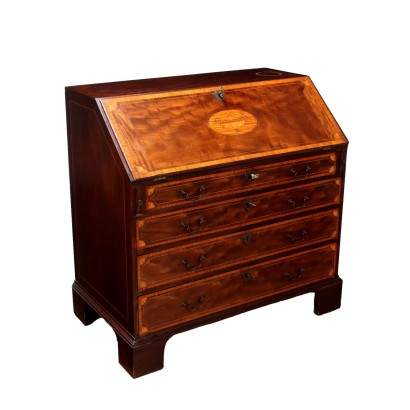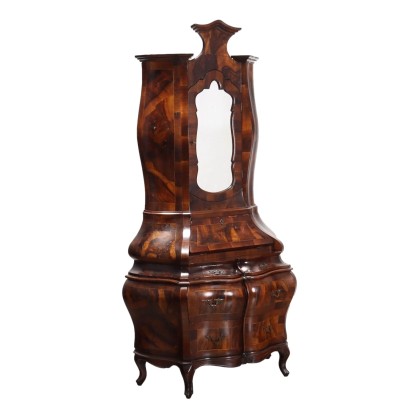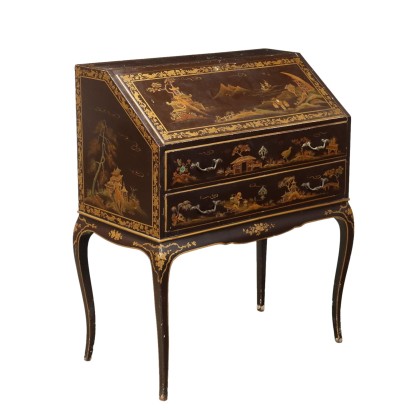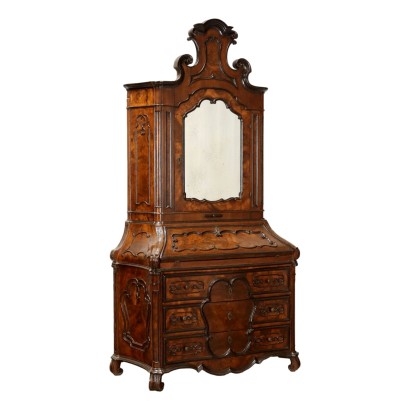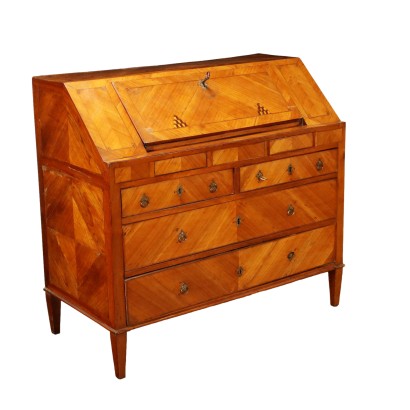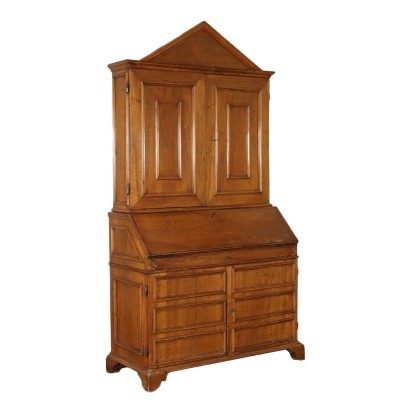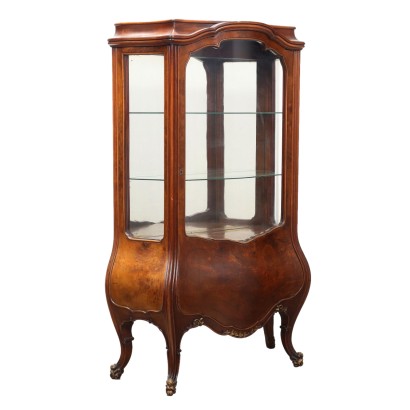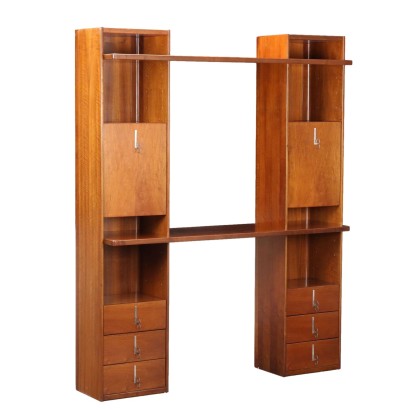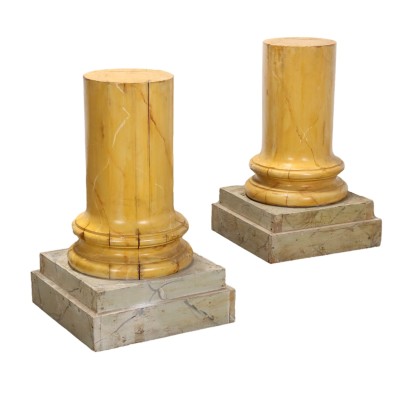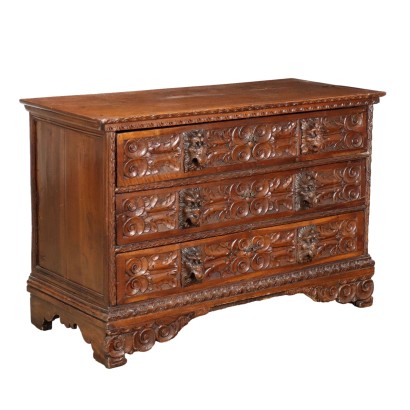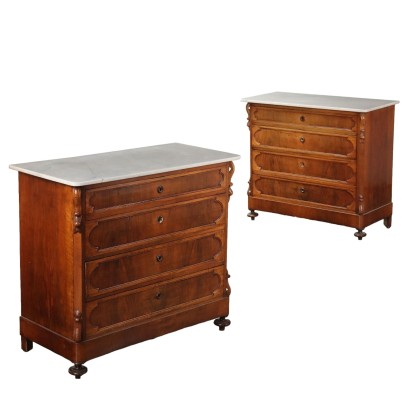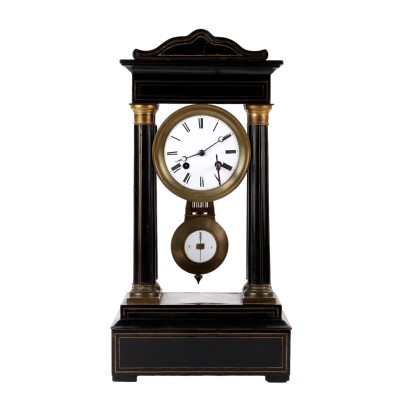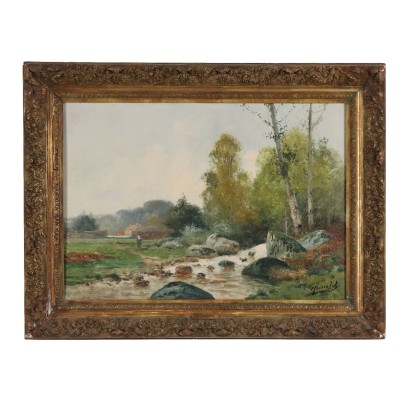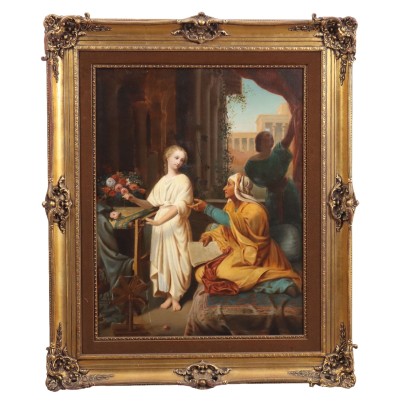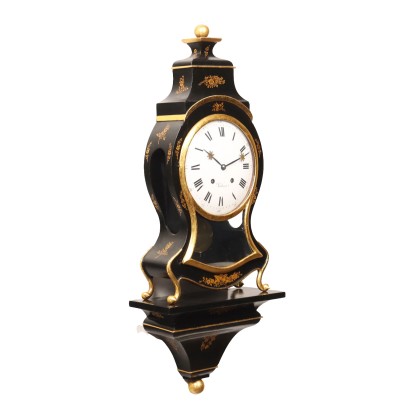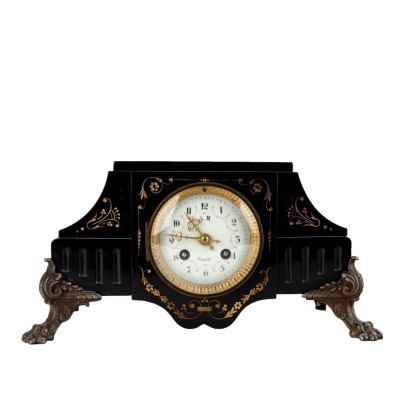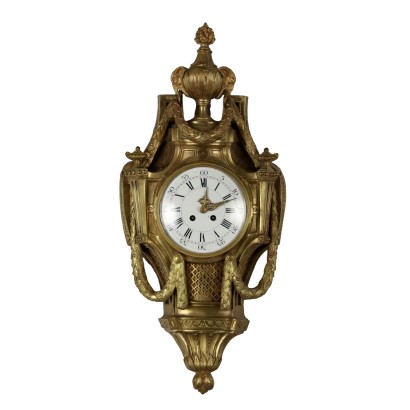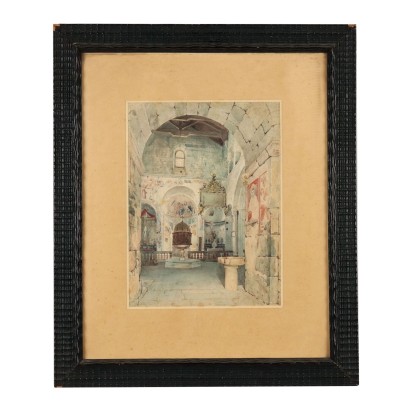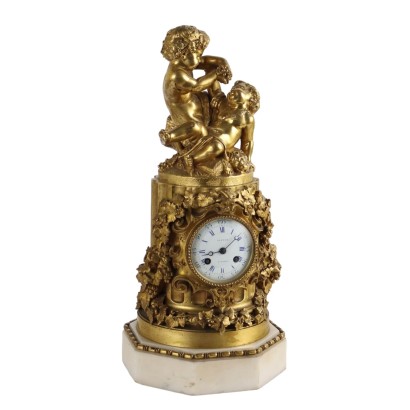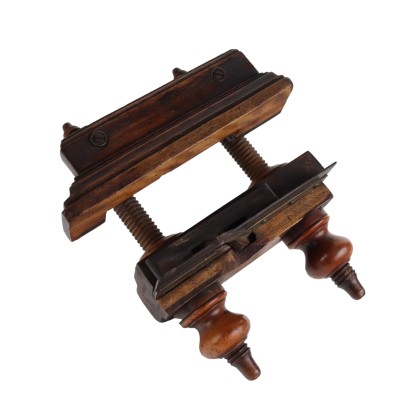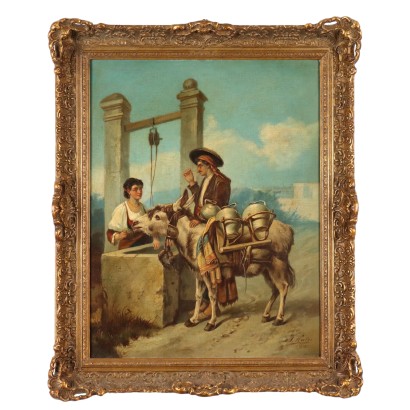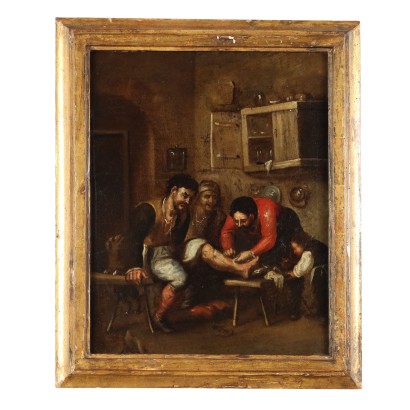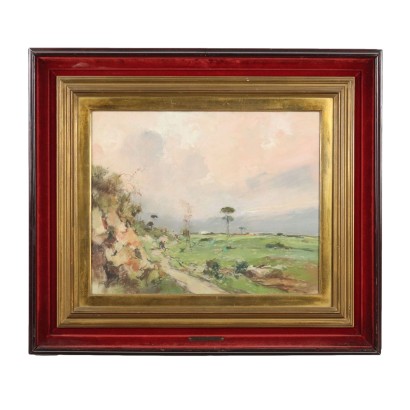Antique Directoire Flap Cabinet Olive Wood Italy XIX Century - Italy, Early XIX Century
Features
Italy, Early XIX Century
Style: Directoire (1790-1804)
Age: 19th Century / 1801 - 1900
Origin: Italy
Description
Directoire flap supported by truncated pyramidal legs, has two drawers plus two side by side placed in the upper band; pair of removable pullers allows the support of the folding door and concealing cabinet with drawers and central compartment. In olive wood, the interiors are in fir; handles and vents replaced.
Product Condition:
Product which due to age and wear requires restoration and re-polishing. We try to present the real state of the furniture as completely as possible with photos. If some details are not clear from the photos, what is stated in the description applies.
Dimensions (cm):
Height: 105
Width: 114
Depth: 53
Restoration options
Complete restoration
Trattamento antitarlo, incollaggi cornicette e lastroni, chiusura crepe fondi cassetti con stucco, stuccature varie (soprattutto ribalta), regolazione dello scorrimento dei cassetti piccoli interni e cassetti grandi. Controllo serratura, sistemazione cerniera sinistra e regolazione della chiusura dell'anta. Igienizzazione e ripresa della lucidatura con 4/5 mani di gommalacca (no pulitore) e finitura a cera. Sostituzione della carta (da scegliere).Additional Information
Style: Directoire (1790-1804)
In this short period of time, we see, in the furniture, an accentuation of the archaeological rigor and at the same time an accentuated linear severity is formulated that in fact preludes and anticipates forms and ornamentations that will then be typical of the Empire style.The furniture of the Directoire era abandons the delicate pastel colors that characterize the Louis XVI production in favor of the dark magnificence of mahogany, which in its vast range of essences will be by far the most appreciated wood in this period.
Added to this is a general abandonment of the floral inlay trends in favor of simple fillets in ebony or amaranth-colored wood, the insertion of light linear profiles in brass is very fashionable.
The innovations are grafted onto a trend that normally finds typologies already widespread in the neoclassical era, and in some cases there is no lack of significant innovations: the chairs, often painted in light colors and archaeological motifs, are distinguished by the typical upholstered or openwork backrest that rolls up "en crosse" and in an "S".
The back legs are very fashionable if curved like a sabre and the typology with an enveloping backrest, called gondola, becomes widespread.
For studies and libraries, chair models characterized by a high concave backrest, called "en hémicycle", with a usually solid structure and a seat covered in leather, become widespread.
The use of the secrétaire finds wide diffusion and the typology of the toilette is completely new, now similar to a console on which a tilting mirror rests within hinged plates.
Certainly the most imaginative novelty of this period is the graceful psyche, consisting of a large oval or rectangular mirror, mounted within high wooden supports and generally supported by sabre-shaped legs.
This is the era in which the oval or round dining table became widely used, while the desk continued to maintain the shape of the à bureau plats models already known in the previous era.
In this period there were no particular technical-constructive innovations, the technologies remained those already in use since the beginning of the mid-eighteenth century.
Find out more about the Directory with our insights:
The unknown gaming table
INSERT ADDITIONAL LINKS:
The Austrian taste of Baroque
The furniture of the Kingdom of Naples
The end of the Directory and the beginning of the Empire
The birth of the private library
Age: 19th Century / 1801 - 1900
19th Century / 1801 - 1900Other customers have searched:
Ribalte, trumeau, bureau, ribalta con alzata, cassettiera con ribalta, scrittoio, secretaire, stipo..
Dai un'occhiata anche ai nostri approfondimenti sul blog e alle presentazioni dei prodotti FineArt:
Leggi di più
Un cassettone a ribalta, espressione del gusto veronese di pieno Settecento
Secrétaire, il mobile con i nascondigli
Scrittoio a dorso d'asino, Piacenza, metà XVIII secolo
Cassettone a ribalta, Roma, secondo quarto XVIII secolo
Ribalta a urna, Milano metà XVIII secolo
Secrétaire, Bottega Francesco Maggiolini, primo quarto XIX secolo
Secrétaire, “Bottega dei fondi verdi”, inizi XIX secolo
Trumeau con anta a ribalta, Queen Anne, Inghilterra 1705 ca.
Sull'antiquariato in generale dai un'occhiata anche a:
Classic Monday: da un pezzo dei nostri magazzini alla storia dell'antiquariato
L'antiquariato dalla A alla Z: il Dizionario dell'Antiquariato
Il dizionario dell'antiquariato - Lastronatura
Il dizionario dell'antiquariato - Mascherone
Il dizionario dell'antiquariato - Natura morta
Il dizionario dell'antiquariato - Opificio
Il dizionario dell'antiquariato - Pastiglia
Il dizionario dell'antiquariato - Savonarola
Il dizionario dell'antiquariato - Rosone
Intaglio barocco con motivo a ricciolo
Leggi di più
Un cassettone a ribalta, espressione del gusto veronese di pieno SettecentoSecrétaire, il mobile con i nascondigli
Scrittoio a dorso d'asino, Piacenza, metà XVIII secolo
Cassettone a ribalta, Roma, secondo quarto XVIII secolo
Ribalta a urna, Milano metà XVIII secolo
Secrétaire, Bottega Francesco Maggiolini, primo quarto XIX secolo
Secrétaire, “Bottega dei fondi verdi”, inizi XIX secolo
Trumeau con anta a ribalta, Queen Anne, Inghilterra 1705 ca.
Sull'antiquariato in generale dai un'occhiata anche a:
Classic Monday: da un pezzo dei nostri magazzini alla storia dell'antiquariato
L'antiquariato dalla A alla Z: il Dizionario dell'Antiquariato
Il dizionario dell'antiquariato - Lastronatura
Il dizionario dell'antiquariato - Mascherone
Il dizionario dell'antiquariato - Natura morta
Il dizionario dell'antiquariato - Opificio
Il dizionario dell'antiquariato - Pastiglia
Il dizionario dell'antiquariato - Savonarola
Il dizionario dell'antiquariato - Rosone
Intaglio barocco con motivo a ricciolo

